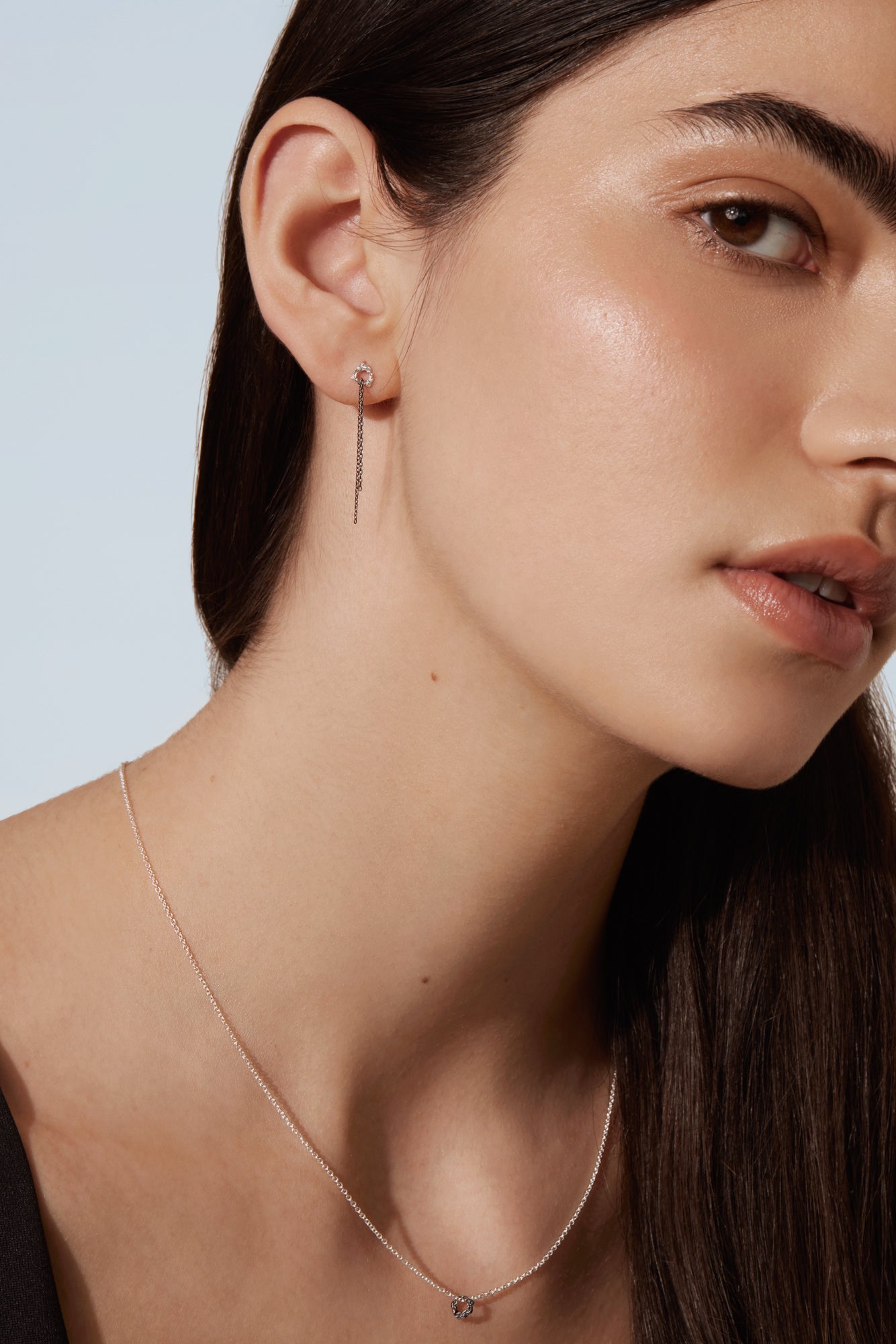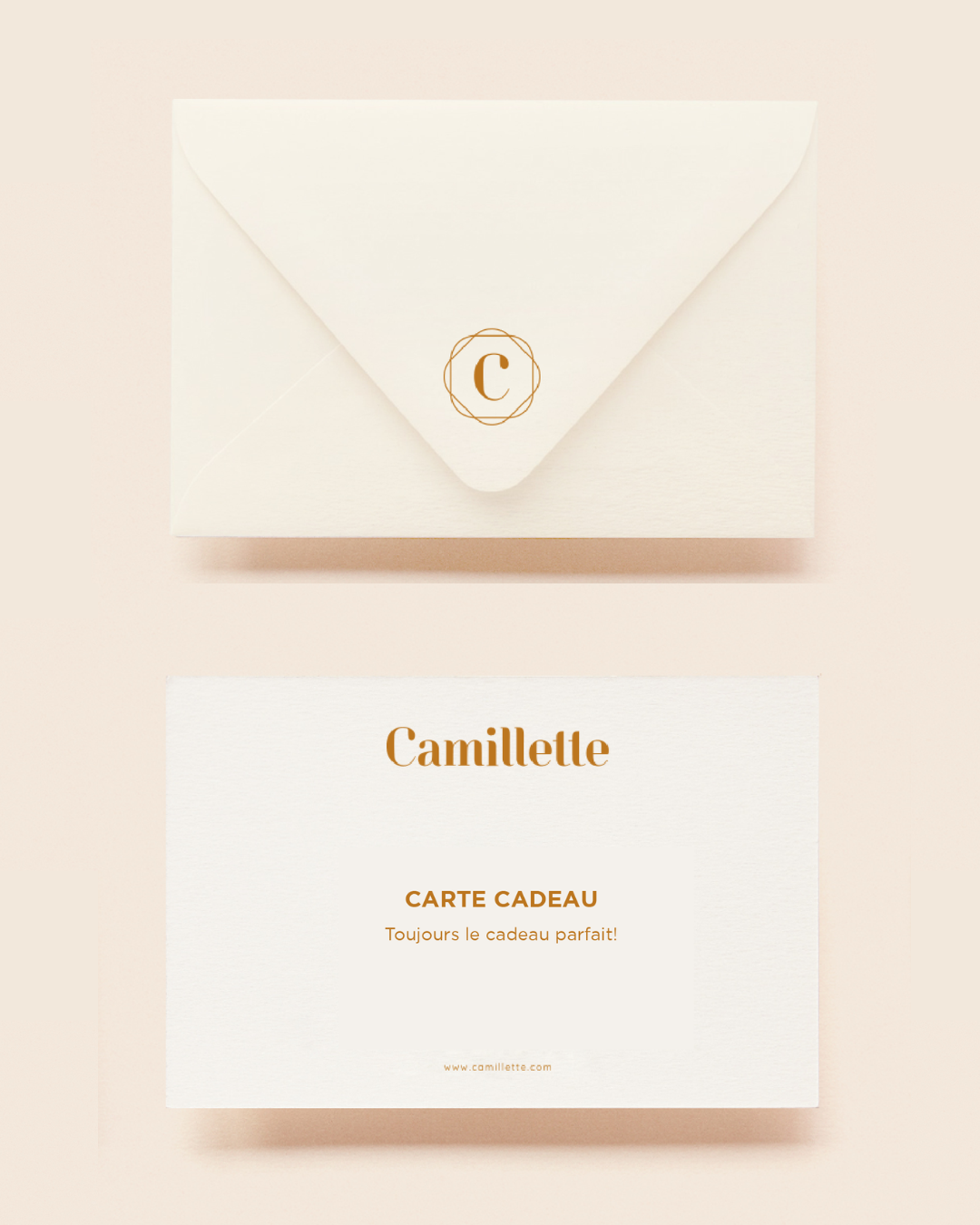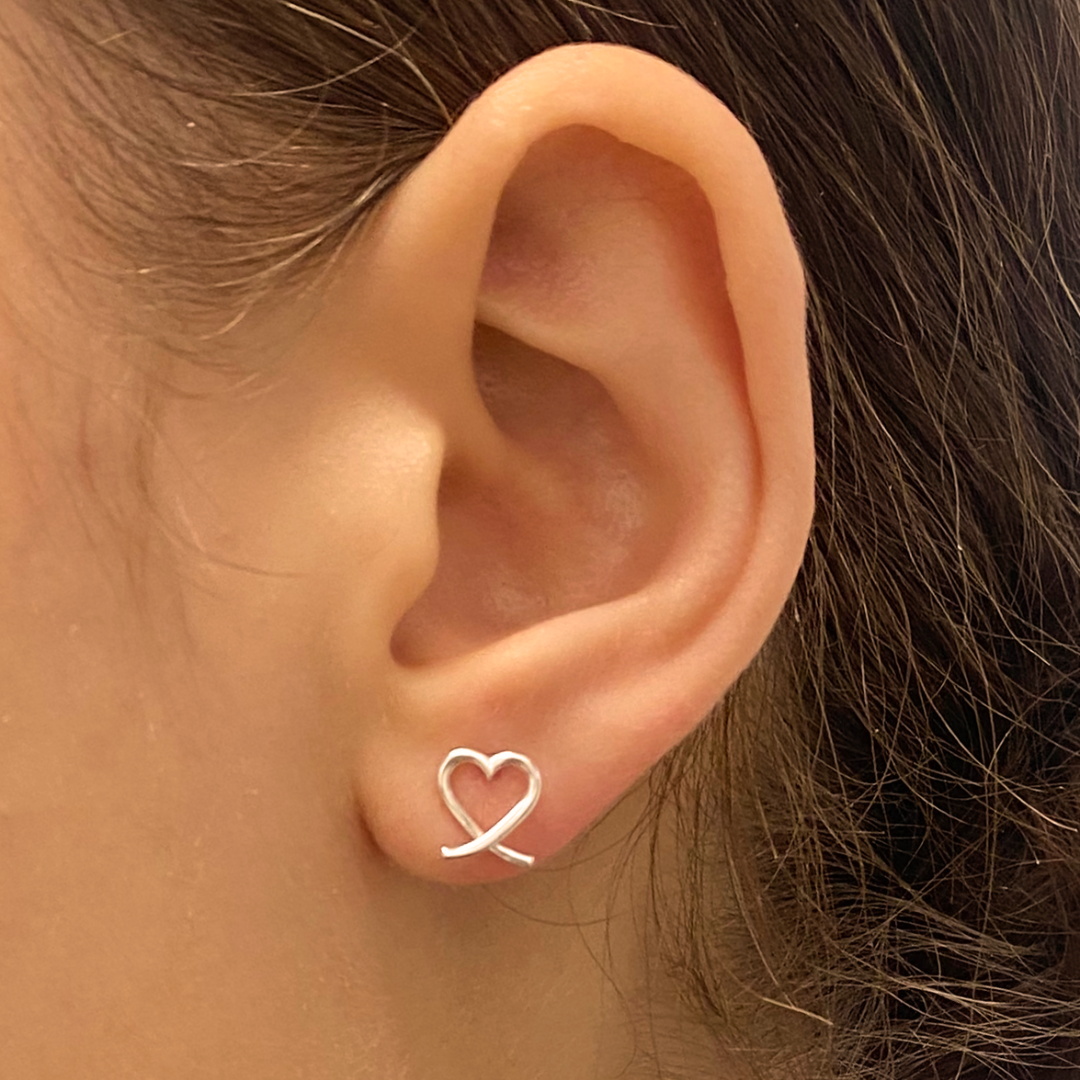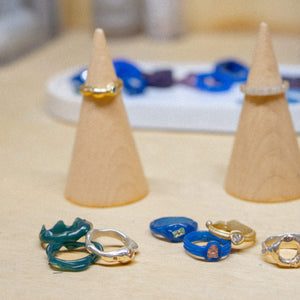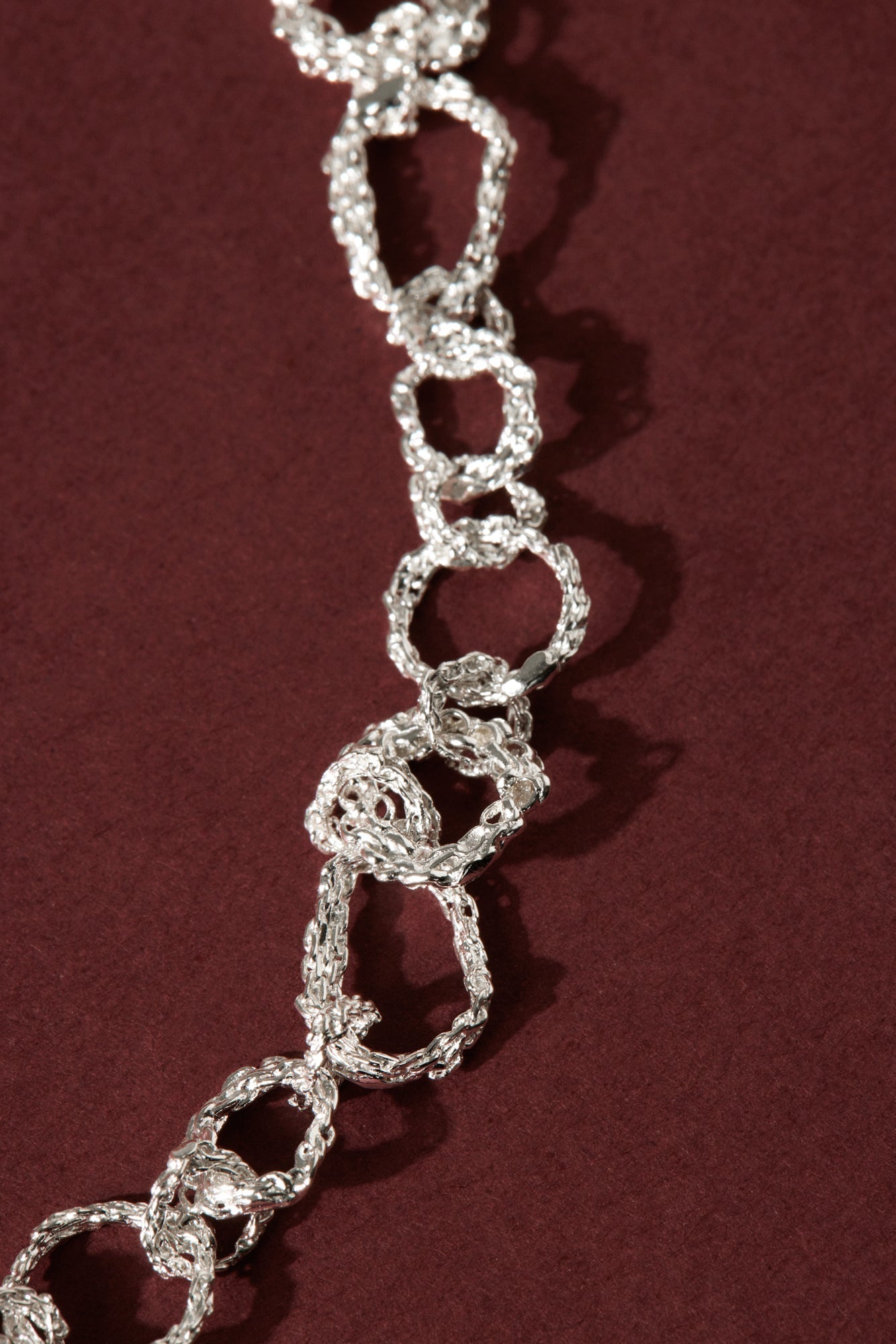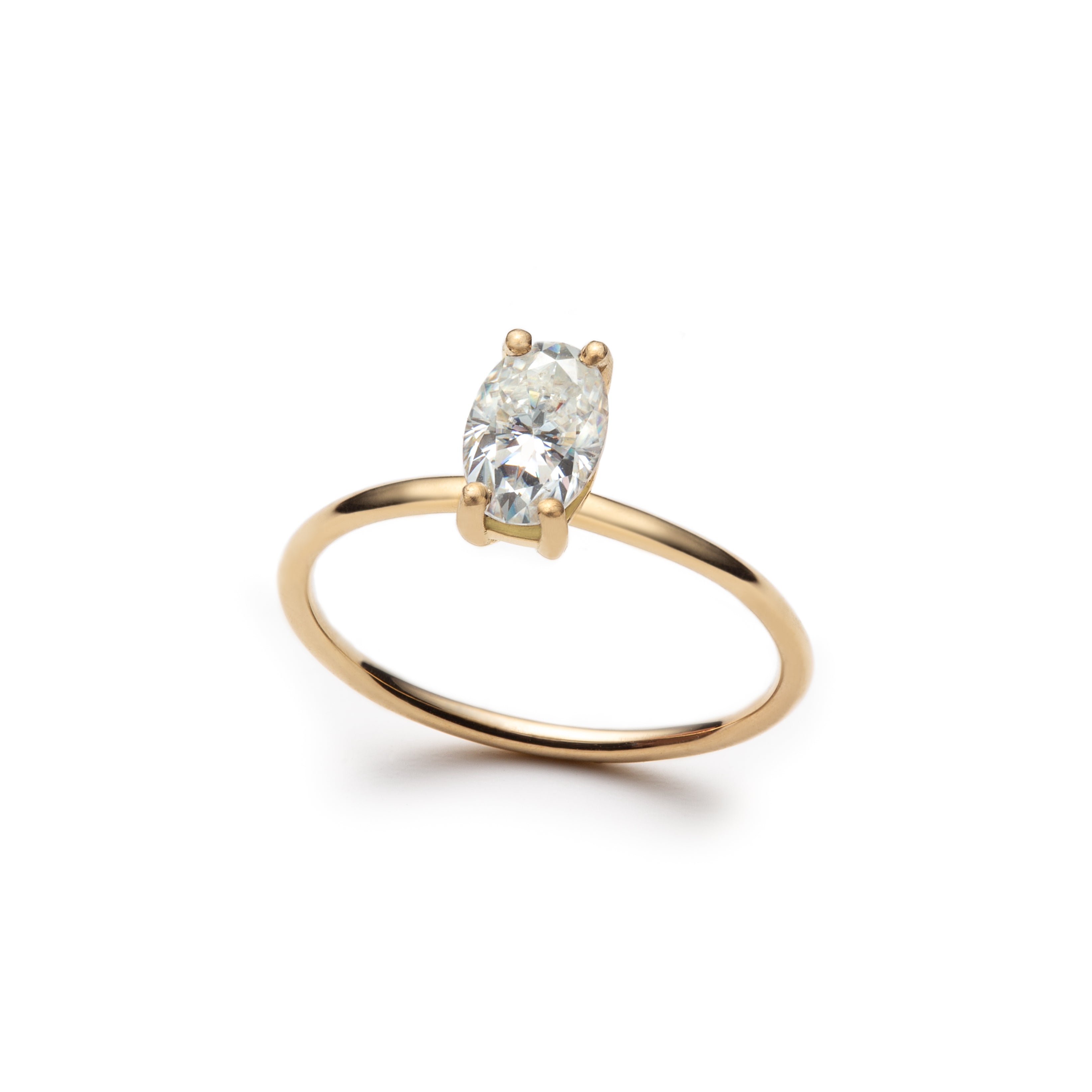
Your guide to understanding diamonds
Selecting the perfect diamond for an engagement or wedding ring is a crucial step. To make an informed choice, it's essential to understand how diamond quality and purity are evaluated, the differences between natural and lab-created diamonds, and the benefits of each in terms of price, quality, environmental and ethical impact, as well as color and shape variations.
The 4Cs: Diamond Evaluation Criteria
A diamond’s quality is determined by four key criteria, known as the 4Cs: Cut, Color, Clarity, and Carat Weight.
1. Cut
The cut of a diamond refers to how it has been shaped and polished. A well-executed cut maximizes the stone’s brilliance by optimizing light reflection through its facets. A cut that is too deep or too shallow can reduce its sparkle. Therefore, paying attention to cut quality is essential when selecting a diamond.

White gold ring with natural diamonds repurposed from an existing ring.
2. Color
Diamonds are graded based on their lack of colour, on a scale from D (colourless) to Z (yellowish or brownish hues). Colorless diamonds are the rarest and most valuable. However, subtle color variations may be almost imperceptible to the naked eye, offering excellent value for money.
3. Clarity
Clarity measures the presence of internal inclusions or external blemishes. The grading scale ranges from FL (Flawless - no inclusions or blemishes) to I3 (Inclusions visible to the naked eye). While flawless diamonds are extremely rare, many inclusions are microscopic and do not affect the diamond’s visible beauty.
4. Carat Weight
Carat refers to a diamond’s weight, with one carat equaling 0.2 grams. While weight influences the apparent size, two diamonds of the same weight may have different values depending on their cut, color, and clarity.

Gold ring with a lab-grown diamond.
Natural Diamonds vs. Lab-Grown Diamonds
Natural diamonds take billions of years to form under specific geological conditions, while lab-grown diamonds are created in just a few weeks using advanced technology that replicates these conditions. In appearance, both types are identical, offering the same brilliance and durability.
Advantages of Lab-Grown Diamonds
- Price: Typically 20-40% cheaper than natural diamonds of the same characteristics, allowing you to purchase a larger or higher-quality stone within your budget.
- Environmental & Ethical Impact: Lab-created diamonds eliminate mining, reducing environmental impact and ethical concerns related to "conflict diamonds."
Diamond Shapes & Colors
- Round (Brilliant Cut): The most popular shape, designed to maximize sparkle with 58 facets.
- Princess: Square with sharp edges, offering a modern and elegant look.
- Oval: Elongates the finger while maintaining brilliance similar to a round cut.
- Emerald: Rectangular with step-cut facets, emphasizing clarity.
 Visual created using artificial intelligence.
Visual created using artificial intelligence.
Diamond Colors
Most diamonds sold and worn belong to the colorless to slightly yellow category. The Gemological Institute of America (GIA) has established a color grading scale from D (colorless) to Z (intense yellow).
- D-F: Completely colorless and highly valuable.
- G-K: Nearly colorless when viewed from the top, offering a good balance of value and appearance.
- L-Z: More noticeable yellow hues, affecting the price and visual appeal.
Fancy-colored diamonds (blue, pink, yellow) follow an entirely different pricing structure, making them unique and highly sought after.

White gold ring with natural diamonds repurposed from an existing ring.
Price Considerations
The price of a diamond varies significantly based on its size, clarity, color, and cut. Within colorless diamonds, there are ten clarity grades and ten color grades, leading to up to 100 price variations per carat. Additionally, fancy-colored diamonds have a completely different valuation system, adding further diversity to market prices.
Making the Right Choice
The ideal diamond depends on your personal preferences, budget, and priorities—whether it’s origin, environmental impact, or size. By understanding the 4Cs and being informed about natural vs. lab-grown diamonds, you’ll be well-equipped to make a choice that matches your expectations and perfectly symbolizes your commitment !
To reserve your custom diamond project, book your appointment now.
